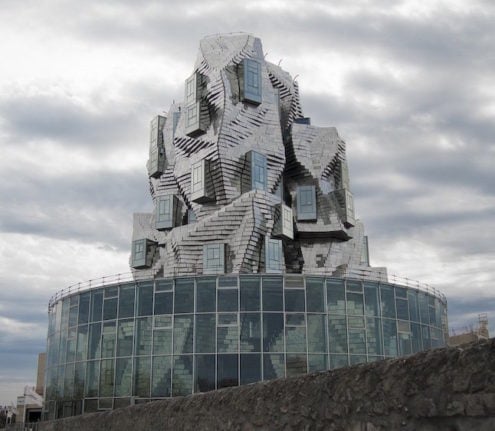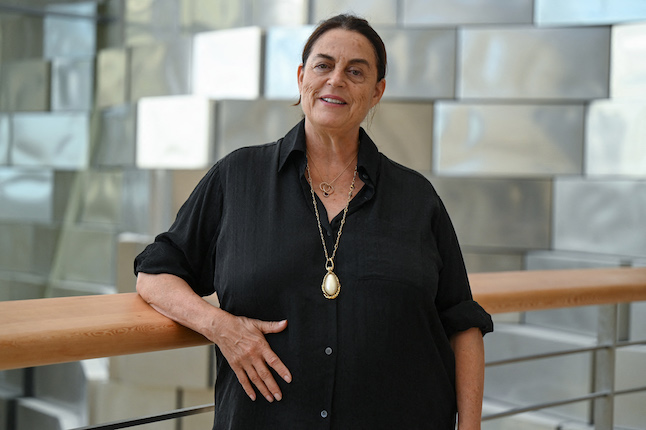How did you get into architecture?
My passion for architecture began in my last years of high school, where I studied surveying. The excellent teachers who had experience in the field were able to pass on their passion to me.
As a result, once I graduated, I decided study architecture at the Politecnico di Torino.
Why is Barmaz village so important and worthy of restoration?
The choice of Barmaz didn't come from its importance on a historical level, as it was a simple farming village, but was more down to its position.
Given the structure of the Aosta Valley, the central valley has ended up as the most urbanized and populous area in the region, but right in its centre, close to the main roads, you find this small cluster of abandoned houses. Anyone who passes by Barmaz must wonder about the reason for its abandonment.
Could you explain your proposal for the 'Hotel Village' in Barmaz, and how it would work?
It is based on the model of 'Ospitalità Diffusa' (Spread out Hospitality) conceived by G. Dall'Ara, an idea which is slowly spreading throughout Italy and is even gaining popularity abroad. The basic concept is simple: there is a central 'pole' building which provides various hotel services to guests, who stay in separate accommodation units in different buildings spread across an inhabited historical village.
In the case of Barmaz, I'm dealing with a different idea, called 'Villaggio Albergo' (Hotel Village). It is different from 'Albergo Diffuso' due to the nature of the village, which is isolated and completely uninhabited.
What made you choose this particular theme for your thesis?
At the Politecnico di Torino, my degree course specialized in 'Sustainable Architecture', and I decided to finish my studies with a thesis on a topic which was closely linked to this concept.
Uniting my passion for the mountains and for the Earth, I arrived at the idea of looking at the restoration of an old, deserted village for touristic purposes, based on the concept of 'Ospitalità Diffusa'. The key idea of the entire project was to focus on the future of our planet; we need to stop building on undeveloped land, and instead turn to restoration.
Do you know if any similar projects have already been successfully carried out?
Certainly, similar projects have resulted in towns being brought back to life and becoming inhabited again. A good example is the group Sextantio, which created two 'Alberghi Diffusi' in Aquila and Matera, and is planning to expand. Most Italian regions now have a specific law regarding such projects.
How would the restoration of Barmaz be financed?
Unfortunately, given the complexity of the project and the focus of the thesis on the technological planning aspect, I didn't deal with the economic side, but it could be a starting point for a specific study.
So, do you think your thesis could become a reality? What have the authorities said?
In the past, there have been lots of redevelopment projects suggested for this village, but between economic problems and issues connected with various owners of the buildings, unfortunately all of them have had to be abandoned. However, after the discussion about my thesis, lots of people have been very interested in my work.
Italian architecture is famous all over the world. How do villages like Barmaz end up abandoned, with nobody looking after them?
The main problem is linked to the property. At one time there were many more families, and when the head of a family died, properties and buildings would be divided between the children, and so on. After some time, this ends up with small rural estates split into tiny fractions; then in many cases, some of the landowners are abroad, and it becomes very difficult to find a way of sorting everything out.
Are there any other problems facing Italy's architectural sector today?
The economic crisis has certainly taken its toll on this field in Italy, also because people have less money to invest. In my opinion, we're now at the point where we need to change the way we think about architecture compared to the past. If at one time people worked on planning new buildings and homes all over the place, today we need to work on restoring the rural buildings, and those which were built after the economic boom.
Now that you've finished university, what kind of work would you like to do in the architectural sector?
In a nutshell, my work was meant to be an idea or a model for how we can put an end to 'overbuilding', which is a huge problem in Italy today. The past 15 years have been characterized by an unchecked level of construction and this has led to 7.6 percent of our national territory being urbanized, which is equivalent to the size of Puglia and Molise.
In a country with such historical and natural beauty, this is unthinkable. For this reason, I see my future as being in Italy, so I can contribute to changing this situation – starting small, in my own region.
Don't miss a story about Italy – Join us on Facebook and Twitter.




 Please whitelist us to continue reading.
Please whitelist us to continue reading.
Member comments